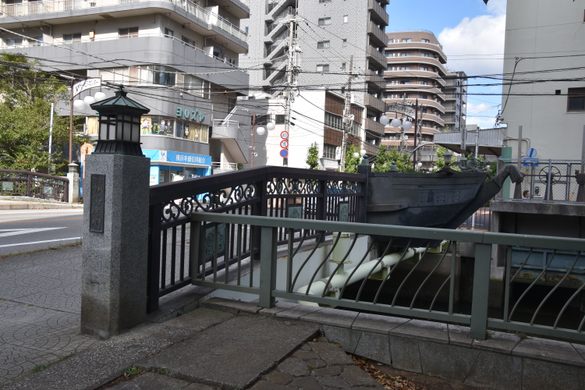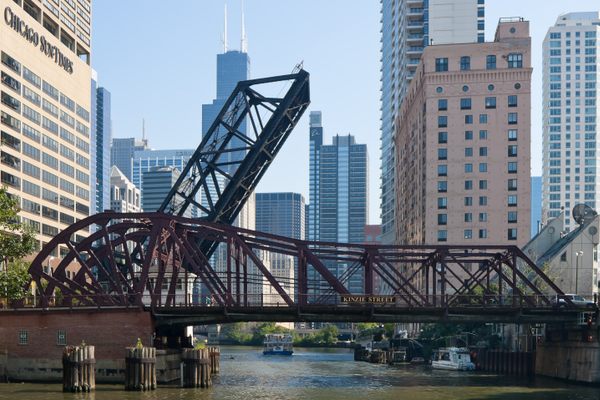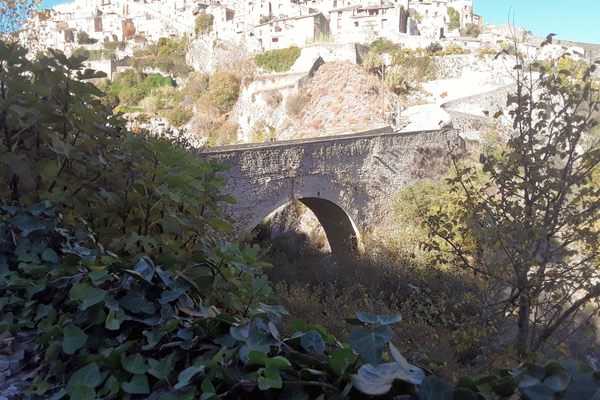13 Bridges of the Ebi River
A bronze ship jutting out of a bridge, a commemoration of Osamu Dazai, a sculpture created by 30 manga legends, and more.
The bayside city of Funabashi is an easy reach from Tokyo, located right beyond the prefectural border. The Ebi River, also known as the Shrimp River, runs through its central area. The name derives from a 12th-century anecdote, which claims that shrimps caught from it were gifted to Lord Yoritomo of the Genji clan when he stopped by during his journey.
The origin of the city’s name, Funabashi (literally “ship bridge”), is also said to come from the Ebi River: as no footbridge was built here in feudal times, locals would arrange their boats in a row across the river. The name has been recorded since the Heian period (794-1185), but some believe that this “ship-bridge” tradition goes further back into the Age of the Gods.
On Ebigawa Bridge, one of the 13 bridges that have since been constructed over the Ebi River, there is a monument commemorating the city’s etymology, in the form of bronze prows of a ship protruding from either side of the bridge. It is further accentuated with a figurine of a demigod riding a dragon, a relief of expressive noh masks, and a preserved handprint of Shigechiyo Izumi, a then-120-year-old man who held a (later withdrawn) Guinness World Record for being the world’s oldest male.
The “birthplace of Funabashi” memorial is not the only monument on the Ebi River; in fact, each of the 13 bridges is decorated with some sort of sculpture, some inspired by local folklore.
For example, on Funabashi Bridge and Maruyama Bridge, you can find sculptures of the kappa, a water goblin popular in Japanese folk tales. Local legend has it that one such creature once lived in the Ebi River, who would try to drown children and steal their shirikodama, a mythical organ found in the anus. The particular kappa was none too bright, however, and disgustedly fled the area when he saw that the children of Funabashi had sickly purple spots on their buttocks—not knowing that they were caused by the mud of the river.
The kappa monument on Maruyama Bridge, titled “The Ship of Volunteering,” is a sight to behold if you are interested in classic manga. A total of 30 legendary artists of the Showa era worked on the piece, including Fujiko Fujio A, Takashi Yanase, Shotaro Ishinomori, Takao Saito, Ryohei Yanagihara, and even Osamu Tezuka.
If you are more interested in Japanese literature, Kokonoe Bridge is the one to head to, where there is a pair of book-shaped sculptures honoring Osamu Dazai, the author of No Longer Human and The Setting Sun, who briefly lived in the neighborhood from 1935 to 1936. Just a short walk away, the site of his former residence is commemorated with a historical marker, and in front of the Civic Cultural Hall stands an oleander tree planted by Dazai himself.
There are also monuments dedicated to the local fishing industry, a music-themed statue inspired by the children’s song “Lift Your Palms Toward the Sun,” as well as bronze figures of a marching band, Japanese folk heroes, and characters from Hans Christian Andersen’s fairy tales, including the Steadfast Tin Soldier and Thumbelina, next to whom sits a frog imitating Auguste Rodin’s masterpiece The Thinker.
Know Before You Go
The first bridge (Funabashi Bridge) and the thirteenth bridge (Mukaida Bridge) are about a mile and a half apart, over 30 minutes’ distance by walk. The closest station to Funabashi Bridge is Daijingushita on Keisei Line.

























Follow us on Twitter to get the latest on the world's hidden wonders.
Like us on Facebook to get the latest on the world's hidden wonders.
Follow us on Twitter Like us on Facebook